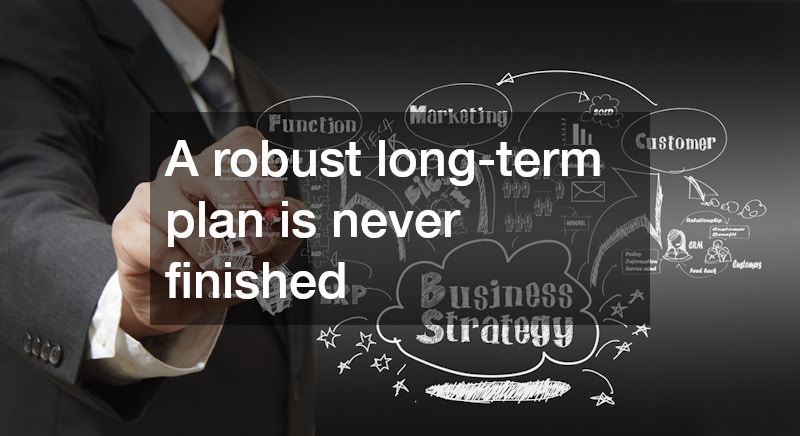
In today’s dynamic business environment, creating a robust, long-term business plan is essential for guiding growth, securing financing, and aligning your team around a shared vision. Whether you’re evaluating opportunities for acquiring industrial land for sale or expanding into new markets, a comprehensive roadmap helps you anticipate challenges and capitalize on emerging trends. By articulating clear goals, defining actionable strategies, and embedding measurable milestones, you transform abstract ambitions into concrete results. This guide will walk you through each critical phase of crafting a business plan designed to endure market shifts and drive sustainable success over the years to come.
A long-term plan is more than a static document—it’s a living blueprint that evolves alongside your enterprise. From initial market research to financial modeling and risk mitigation, every component plays a vital role in steering decisions and rallying stakeholders. As you read on, you’ll discover how to structure your plan, integrate essential analyses, and leverage professional expertise—such as business tax accountants—to ensure accuracy and compliance. By the end of this article, you’ll have the insights needed to build a plan that secures investment, motivates teams, and positions your company for lasting growth.
Defining Your Vision and Mission
A compelling vision statement articulates the ultimate destination for your enterprise, while a mission statement outlines its core purpose and values. Start by reflecting on why your business exists beyond profit generation: what customer needs do you fulfill, and what unique value proposition sets you apart? For example, a company focused on revitalizing downtown corridors might emphasize community engagement and design excellence as foundational pillars. These statements provide north-star guidance, helping you evaluate opportunities—such as developing retail buildings in underserved neighborhoods—against your overarching ambitions.
Once established, embed these guiding principles into every section of your plan. A well-crafted mission statement informs marketing initiatives, shapes operational priorities, and influences hiring practices. When stakeholders—from board members to new hires—understand and embrace your vision, decision-making becomes more cohesive. Regularly revisit and refine these statements as your organization matures, ensuring they remain relevant and inspiring across growth stages.
Conducting Thorough Market Analysis
Understanding the competitive landscape and customer behavior is crucial to identifying sustainable opportunities. Begin with macro-level research on industry trends, regulatory shifts, and economic indicators that affect your sector. For instance, rising demand for flexible storage solutions could signal growth potential if you operate in the self-storage industry. Complement this with micro-level analyses—surveys, focus groups, and social listening—to capture nuanced customer preferences and pain points.
Next, perform a competitive audit to map direct and indirect rivals. Analyze pricing structures, distribution models, and marketing strategies. By benchmarking against established players, you uncover gaps in service delivery or product features that your business can exploit. Use tools like SWOT (Strengths, Weaknesses, Opportunities, Threats) analysis to synthesize insights and prioritize areas for strategic investment.
Assessing Financial Projections and Funding Needs
A credible financial model underpins investor confidence and internal accountability. Begin by forecasting revenue streams across multiple scenarios—conservative, moderate, and aggressive—over a five- to ten-year horizon. Incorporate assumptions about customer acquisition costs, average order values, and churn rates to ground projections in reality. In parallel, estimate fixed and variable expenses, factoring in salaries, rent, utilities, and technology investments.
If your growth plan includes acquiring additional assets—such as expanding into new retail markets or partnering with a storage units rental provider—you’ll need to outline funding strategies. Detail whether growth capital will come from debt financing, equity infusion, or reinvested earnings. Present clear repayment schedules for loans and anticipated dilution impacts for equity rounds. Engaging professional business tax accountants early ensures you structure deals in a tax-efficient manner, minimizing liabilities and maximizing cash flow.
Building Your Operational Framework
Operational excellence is achieved through meticulous planning of processes, resources, and logistics. Start by mapping your value chain—from procurement and production to distribution and customer service. Identify critical dependencies, such as reliable suppliers or partnerships with a local print shop to support branded collateral. For each functional area, define standard operating procedures (SOPs) that emphasize consistency, quality control, and scalability.
Organizational structure should align with strategic priorities. As you grow from a small team to a mid-sized enterprise, delineate roles and responsibilities clearly. Use organizational charts and responsibility matrices (RACI) to avoid overlaps and gaps. Incorporate performance management systems that track key performance indicators (KPIs) tied to operational efficiency—such as order fulfillment times or service-level agreement (SLA) compliance.
Crafting a Comprehensive Marketing Strategy
A well-rounded marketing plan fosters brand awareness, drives customer acquisition, and nurtures loyalty. Begin by defining your target segments and buyer personas. Then, select blended marketing channels—digital advertising, content marketing, trade shows, and direct mail—to engage prospects at each stage of the funnel. If your business relies on storefront visibility, consider investing in commercial led business signs that reinforce brand identity and attract foot traffic.
Content is king: develop a content calendar that includes blog posts, case studies, webinars, and social media campaigns tailored to audience interests. Leverage marketing automation platforms to segment audiences, personalize outreach, and streamline lead nurturing. Allocate budget and set measurable goals for each channel—click-through rates for digital ads, attendance numbers for events, or conversion rates for email campaigns. Regularly analyze campaign performance and optimize tactics based on data-driven insights.
Integrating Technology and Infrastructure
Technology underpins modern business agility and efficiency. Assess your IT infrastructure requirements—CRM systems, enterprise resource planning (ERP) platforms, and cloud services—that support seamless operations. For businesses with physical locations, partnering with a reliable roofing contractor ensures your facilities remain weather-proof and safe for employees and customers alike. Simultaneously, evaluate telecommunication needs, cybersecurity protocols, and disaster recovery plans to mitigate technology-related risks.
Adopt a phased approach to tech integration. Start with core systems that address immediate pain points—such as inventory management or customer relationship tracking—and expand to advanced solutions like business intelligence dashboards. Establish an IT governance framework to prioritize projects, allocate resources, and monitor ROI. Engage reputable vendors and conduct rigorous due diligence to confirm system compatibility, scalability, and vendor support commitments.
Managing Risk and Ensuring Compliance
Every long-term plan must account for potential risks—from market volatility and supply chain disruptions to legal liabilities and natural disasters. Conduct a comprehensive risk assessment that identifies internal and external threats. For example, if your operations involve hazardous materials, ensure your facilities comply with fire safety codes and invest in a commercial fire alarm system to protect assets and personnel.
Develop risk mitigation strategies such as insurance coverage, contingency reserves, and business continuity plans. Stay current with industry regulations, data privacy laws, and employment statutes by subscribing to regulatory updates or partnering with compliance consultants. Document policies in an accessible manner and train your team on emergency procedures, ethical standards, and reporting protocols.
Assembling the Right Team for Execution
Success hinges on having the right people in the right roles. Identify skills gaps that could hinder growth—whether in sales, finance, operations, or customer support. Use targeted recruitment strategies, tapping into professional networks, industry associations, and specialized recruiters. Offer compelling value propositions—competitive compensation, growth opportunities, and a strong company culture—to attract top talent.
Consider leveraging outsourced services for non-core functions. Engaging a locksmith service, for example, ensures secure access management for your facilities without maintaining a full-time in-house team. Similarly, professional HR firms or fractional CFOs can provide expertise at a fraction of the cost of direct hires. Invest in ongoing training and leadership development programs to build bench strength and succession pipelines.
Establishing Milestones and Performance Metrics
A long-term business plan should include clear milestones that mark progress toward strategic objectives. Break down five-year goals into quarterly or annual targets—revenue, profitability, market share, or customer satisfaction scores. Use balanced scorecards to track financial, customer, internal process, and learning & growth metrics in tandem.
Implement performance dashboards that provide real-time visibility into KPIs. Hold regular review meetings with leadership teams to discuss variances, analyze root causes, and adjust tactics. Celebrate achievements and recalibrate underperforming areas. By fostering a culture of accountability and continuous improvement, you ensure your plan remains dynamic and responsive to changing conditions.
Creating a long-term business plan is a transformative exercise that transcends mere goal setting; it instills strategic discipline and accountability across your organization. By defining a clear vision, conducting in-depth market research, and crafting financial projections with the input of business tax accountants, you establish a solid foundation for growth. Operational frameworks, marketing strategies, and technological integrations—from partnering with reputable roofing contractors to installing advanced IT solutions—drive efficiency and resilience.
Risk management measures—such as installing commercial fire alarm systems and securing facilities through professional locksmith services—protect your assets and maintain compliance with evolving regulations. Infrastructure investments, including high-impact commercial led business signs and collaborations with a local print shop for collateral, enhance brand presence and customer engagement. Finally, assembling the right team and embedding measurable milestones keeps everyone aligned and focused on shared objectives.
A robust long-term plan is never finished; it evolves with your enterprise, market dynamics, and stakeholder expectations. Schedule periodic reviews to update assumptions, recalibrate targets, and integrate new insights. With this living document as your guide, you can navigate economic cycles, seize growth opportunities—such as evaluating industrial land for sale or exploring new retail buildings—and sustain competitive advantage for years to come. From browsing commercial real estate listings to speaking to an investors, there’s a wealth of tasks that will help get your business off the ground.




